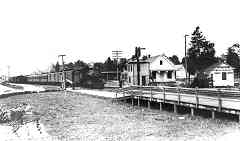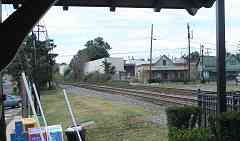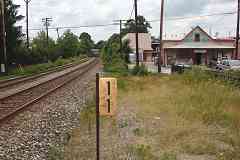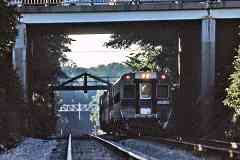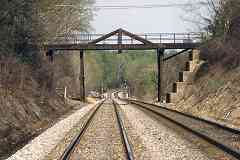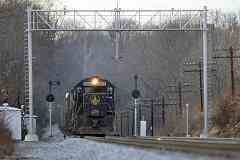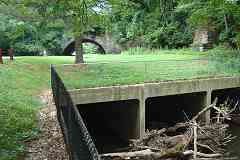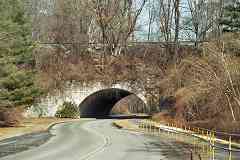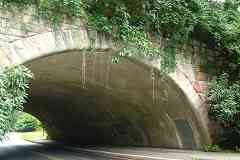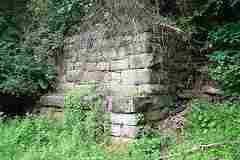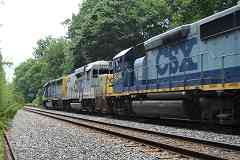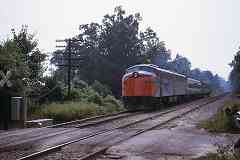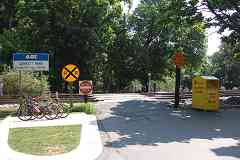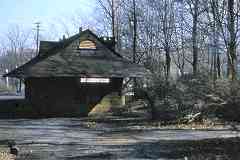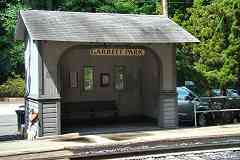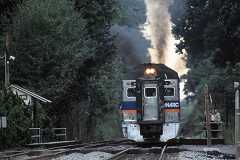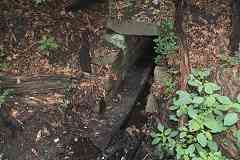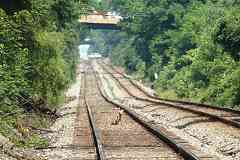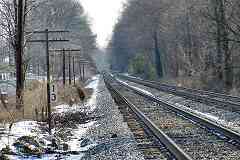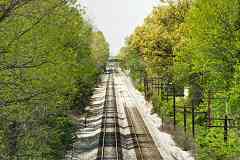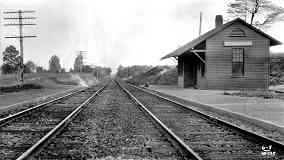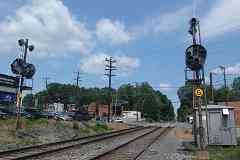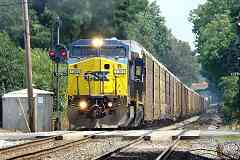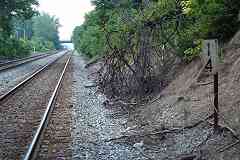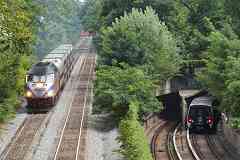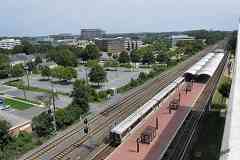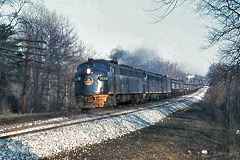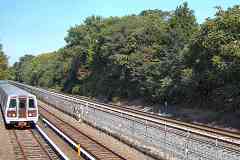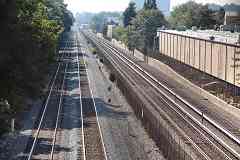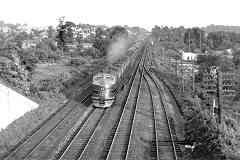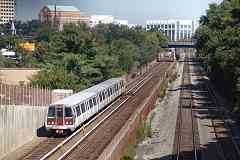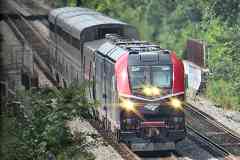|
Two wild and crazy foxes are Czeching out the rails. There's plenty of
time to relax since a white SUV blocks the tracks beyond. Actually, no,
that's the Randolph Road grade crossing seen through about a mile of
max-zoom heat-distorted June air.
When trackside you need to be ready for critters of all kinds. Even
black bears are known to venture this far east, particularly during
May and June when younger males are establishing new territory.
You won't find this magnitude of grade change along the Old Main
Line. By the time the Met was engineered (40 years after the OML),
B&O had learned to worry about keeping the track straight
first, level second.
The white rectangle on the right is milepost 13, beyond that is a
bridge for Nicholson Lane / Parklawn Drive, and a bit further is
a forgotten B&O stop named Windham. Since I have not found any
pictures of a Windham Station, I assume little more than a
passenger waiting shack had existed.
| 